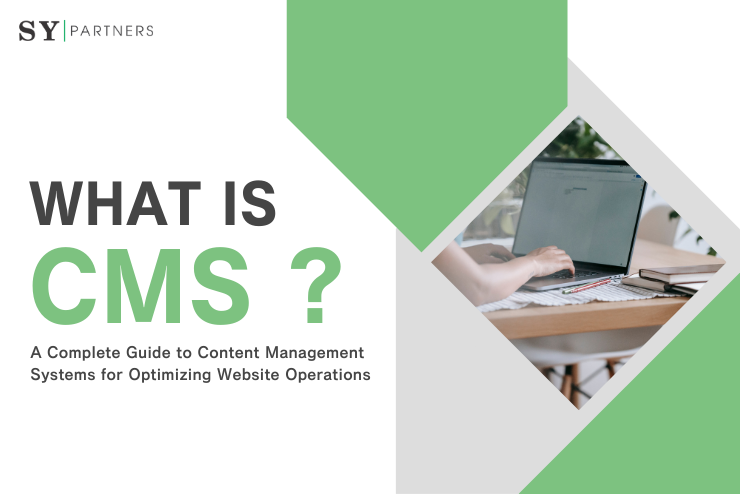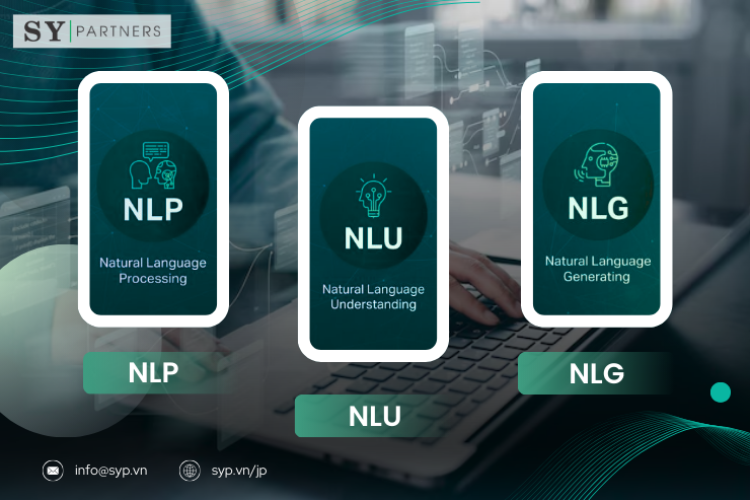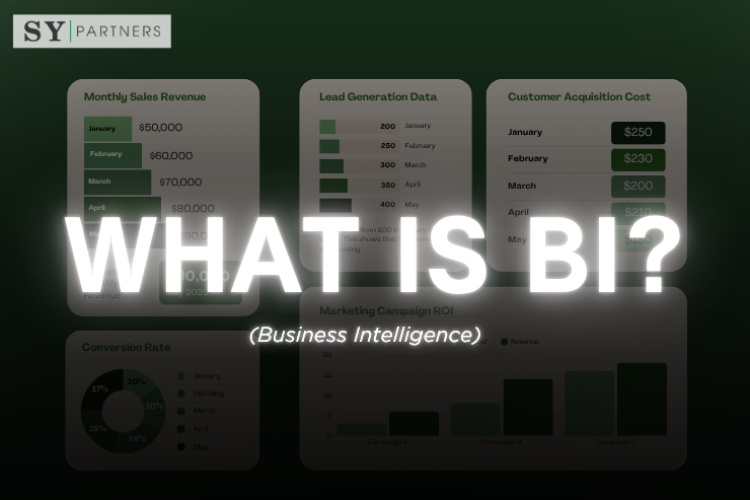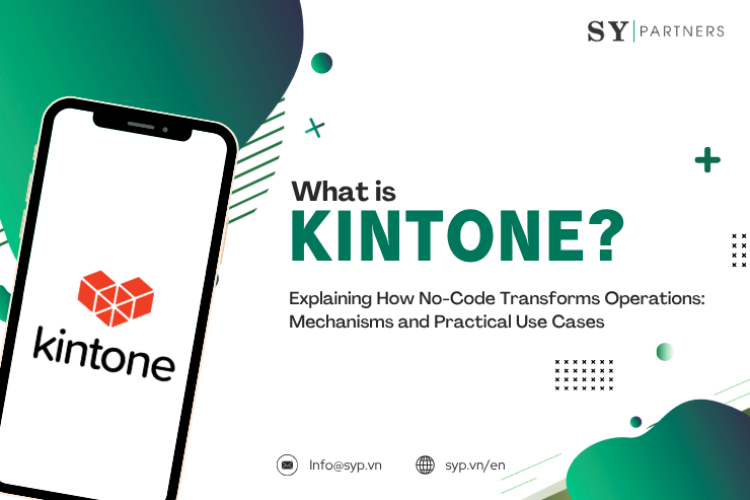What is a CMS ? A Complete Guide to Content Management Systems for Optimizing Website Operations
In today’s digital era, websites serve as the foundation for businesses and individuals to represent their brand and connect with customers. However, traditional website development has long been associated with challenges—requiring specialized skills, significant time, and high operational costs.
This is where the CMS (Content Management System) comes in. A CMS allows users to easily create and manage content without coding expertise, making it widely adopted by everyone from individuals to large enterprises.
In this guide, we will cover the fundamentals of CMS, its types, core features, advantages and disadvantages, how to choose the right system, and real-world use cases. Whether you are a beginner considering implementation or an advanced user evaluating your current system, this article will provide actionable insights on how CMS can enhance business efficiency and strengthen digital presence.
1. What is a CMS?
A CMS (Content Management System) is software designed to create, edit, manage, and publish website content efficiently. It enables centralized management of digital content such as text, images, and videos, while offering an intuitive interface for non-technical users to update websites seamlessly.
One of its key advantages is the separation of content (what you publish) and design (how it looks). This allows design changes and content updates to be made independently.
For example, publishing a blog post, updating product information, or releasing company news can all be done quickly without developer support. This empowers marketing teams and content creators to work autonomously, reducing dependency on IT departments.
Traditional Website Development vs. CMS-Based Website Development
The approach and workflow differ significantly between traditional website development and CMS-driven website management.
| Aspect | Traditional Website Development | CMS-Based Website Development |
|---|---|---|
| Development Process | Built from scratch using HTML/CSS or programming | Built via admin panel with templates and content input |
| Content Updates | Requires code edits or developer support | Non-technical users can easily update via admin interface |
| Initial Cost | High, with long development cycles | Relatively low, faster deployment |
| Design Changes | Requires re-coding for layout modifications | Flexible with themes and templates |
| Scalability | New features require custom development | Quickly extended with plugins or modules |
| Operational Efficiency | Updates are time- and resource-intensive | Instant content updates, high efficiency |
While traditional development excels at originality and highly specialized requirements, it comes with heavy costs in terms of expertise and maintenance.
In contrast, CMS offers efficiency, scalability, and operational speed, making it especially advantageous for content-driven businesses and marketing activities.
2. Core Features of a CMS
The true value of a CMS lies in its diverse range of features. In particular, content creation, user management, media handling, and SEO support are essential elements that streamline website operations and directly contribute to business growth. Below, we break down each feature in detail.
2.1 Content Creation & Editing
At its core, a CMS enables intuitive content creation and editing without technical expertise.
| Feature | Description |
|---|---|
| WYSIWYG Editor | ・Edit content in a word processor–like interface ・One-click formatting: bold text, headings, links, image insertion ・Beginner-friendly, intuitive UI |
| Block Editor (e.g., WordPress Gutenberg) | ・Content such as text, images, and buttons are managed as “blocks” ・Drag-and-drop layout building ・Complex page structures can be built without coding |
| Real-Time Preview | ・Instant reflection of edits ・Preview final design before publishing ・Reduces rework and editing cycles |
With these tools, non-developers can quickly build engaging web pages, boosting both production speed and content quality.
2.2 User Management
A CMS provides robust user management features to ensure smooth collaboration across teams.
| Feature | Description |
|---|---|
| Role-Based Permissions | ・Assign roles such as Admin, Editor, Contributor, or Viewer ・Restrict unnecessary permissions to prevent data leaks ・Minimize errors caused by accidental operations |
| Granular Access Control (e.g., Drupal) | ・Permissions can be set at the individual article level ・Ideal for large organizations with departmental structures ・Supports complex editorial workflows |
| Security Measures | ・Restrict access for inactive or unnecessary users ・Combine with two-factor authentication and log monitoring for strong security |
These capabilities are essential for efficient team collaboration and enhanced security, especially for enterprise-scale websites.
2.3 Media Management
Beyond text, CMS platforms excel at managing images, videos, PDFs, audio files, and other media assets in a centralized system.
| Feature | Description |
|---|---|
| Media Library | ・Organize files with categories and tags ・Quickly search and retrieve assets ・Multiple team members can share the same library |
| File Optimization (e.g., Shopify) | ・Bulk upload product images ・Automatic compression and resizing to improve page speed ・Built-in mobile optimization |
| Reusability | ・Reuse uploaded assets across multiple pages ・The same product image can be used in blogs, landing pages, and campaigns |
Effective media management dramatically increases content production efficiency and reduces operational costs, particularly for e-commerce and media-heavy websites.
2.4 SEO Support
Search Engine Optimization (SEO) is critical to attracting website visitors. Modern CMS platforms offer built-in and plugin-based tools that make SEO implementation simple.
| Feature | Description |
|---|---|
| Meta Tag Management | ・Customize page titles and meta descriptions individually ・Improves click-through rate (CTR) from search results |
| Optimized URL Structure | ・Automatically generates clean, SEO-friendly URLs ・Enhances both search engine ranking and user readability |
| Sitemap Generation | ・Automatically creates XML sitemaps ・Improves crawling efficiency for Google, Bing, and other search engines |
| SEO Plugins (e.g., Yoast SEO, Rank Math) | ・Keyword optimization assistance ・Internal linking suggestions ・Redirect management ・SEO scoring and insights dashboard |
Leveraging these SEO features helps drive the cycle of better search rankings → increased traffic → more leads and sales.
3. Advantages and Disadvantages of CMS
Before adopting a CMS, it is crucial to understand both its benefits and potential challenges. While CMS platforms offer efficiency and cost savings, they also come with certain limitations and risks. The following table summarizes the key advantages and disadvantages:
| Category | Advantages | Disadvantages |
|---|---|---|
| Usability | - Easy to manage even for non-technical users - Intuitive UI with low learning curve | - Limited flexibility for advanced customization - Adding unique features requires technical expertise |
| Cost | - Low initial implementation costs - Open-source CMS can be used for free | - Ongoing maintenance and updates may incur costs - Paid plugins can increase expenses |
| Security | - Some CMS (e.g., commercial CMS) provide strong security - Regular updates help patch vulnerabilities | - Open-source CMS requires in-house management and countermeasures - Plugins may introduce security risks |
| Scalability | - Can support small to large-scale websites - Flexible expansion with cloud integration | - Sudden traffic spikes may overload servers, requiring tuning and optimization |
| Extensibility | - Wide range of plugins and themes for easy feature expansion - Suitable for eCommerce, blogs, corporate websites, etc. | - Compatibility issues and plugin conflicts may occur |
| Performance | - Caching functions and CDN integration enable fast page loading | - Excessive use of plugins can slow down performance and cause instability |
| Support | - Popular CMS like WordPress offer extensive documentation and community support - Easy to find solutions through forums | - Open-source CMS lacks official support, requiring self-resolution - Commercial CMS provides support but can be costly |
A CMS provides major benefits such as user-friendly operation, low-cost implementation, and rich extensibility, enabling efficient website management.
However, it also has drawbacks like customization limits, security challenges, and performance risks. Therefore, it is important to carefully evaluate your goals and scale of operation before choosing a CMS.
4. How to Choose the Right CMS
Choosing a CMS is not just about selecting a tool — it’s a strategic decision that directly impacts your website’s growth, scalability, and operational efficiency. The right CMS enables both speed and quality in content management, strengthening your business competitiveness. Below are the key points to consider when selecting a CMS.
| Comparison Point | Key Considerations | Recommended CMS |
|---|---|---|
| Ease of Use | Intuitive operation for beginners | Wix, Squarespace |
| Scalability | Supports API integration and advanced customization | WordPress, Drupal |
| Security | Strong enterprise-grade protection features | Drupal, Contentful |
| Cost | Affordable setup and maintenance | WordPress, Strapi |
| Multi-language Support | Essential for global expansion | Contentful, Drupal |
| Support System | Reliable long-term operational support | Shopify, WordPress (paid plan) |
4.1 Choosing Based on Your Website’s Purpose
The best CMS depends heavily on your website’s purpose. Selecting the right one avoids unnecessary costs and reduces operational burdens.
4.1.1 Corporate Website
The priority is building trust and credibility. A CMS with strong design templates and intuitive editing tools is essential for enhancing brand image.
→ Wix or Squarespace: Excellent templates and ease of use, suitable for non-engineers.
4.1.2 E-Commerce Website
Since revenue is directly tied to the site, inventory management, payment integration, and customer data analytics are must-haves.
→ Shopify: Robust e-commerce features and extensive third-party integrations, scalable from small shops to enterprise-level businesses.
4.1.3 Media / Blog Website
For high-volume content publishing, you need flexible customization and strong SEO capabilities.
→ WordPress: Unmatched scalability with a vast plugin ecosystem, making it ideal for ongoing content-driven websites.
4.1.4 Global / Multi-language Website
Expanding internationally requires translation management and localization support.
→ Contentful or Drupal: Both offer strong multi-language capabilities, widely adopted by global enterprises.
4.2 Key Comparison Points
When selecting a CMS, it’s important to evaluate based on clear criteria rather than relying solely on cost or popularity. Considering these factors in advance allows you to identify the solution that best fits your organization’s long-term needs.
Main Comparison Criteria:
- Ease of Use: Low learning curve and an intuitive admin interface.
- Scalability & Customization: Ability to add new features, integrate APIs, and adapt as your business grows.
- Security: Frequency of updates and strength of built-in protection features.
- Cost Structure: Includes initial setup, licensing fees, hosting, and ongoing maintenance.
- Support System: Availability of official documentation, developer community, and vendor support.
CMS selection should not be decided solely by “low cost” or “market popularity.” The real success factor lies in choosing a platform aligned with your website’s purpose, growth strategy, and operational structure. Beyond short-term efficiency, you must also consider long-term scalability and potential security risks to ensure sustainable success.
5. Use Cases of CMS
The ways CMS are utilized vary greatly depending on the size and industry of a company. From small businesses to large enterprises, each can adopt CMS according to their specific needs. Below are three representative cases:
5.1 Building Corporate Websites for SMEs
Small and medium-sized enterprises often need to operate their websites with limited budgets and manpower. In such cases, CMS platforms like Wix or WordPress, which offer low initial costs and a wide variety of templates, are the best fit.
Instead of building designs and functions from scratch, SMEs can simply combine templates and plugins to create a professional-looking website in a short time.
5.2 Successful E-commerce Sites
For companies aiming to strengthen online sales, Shopify serves as a powerful ally. It is especially popular among apparel and lifestyle brands, as it supports everything from product page creation to payment and inventory management in one place.
Even small teams can launch a professional-grade online store in a short period, which is one of Shopify’s biggest strengths.
5.3 Managing Large-Scale Media Sites
For news platforms or large blogging media that need to publish a massive amount of content continuously, WordPress is often the CMS of choice.
By combining caching features and cloud integration, WordPress ensures server stability even during peak traffic hours, enabling it to handle heavy loads.
Thanks to its high flexibility, WordPress provides a robust foundation to support large volumes of content and multi-editor workflows.
Conclusion
A CMS is a powerful tool that streamlines website creation and management. With options such as open-source CMS, cloud-based CMS, and headless CMS, understanding their unique characteristics allows you to select the system best suited to your objectives. Functions like content creation, user management, and SEO optimization are indispensable for strengthening a business’s digital presence.
When choosing a CMS, it is important to evaluate comprehensively across factors such as site purpose, usability, scalability, security, and cost. By implementing the right CMS, even non-technical users can efficiently manage content and accelerate business growth. Use this article as a reference when considering CMS adoption, and unlock the full potential of your website operations.
Frequently Asked Questions (FAQ)
Q1. Do I really not need coding knowledge if I use a CMS?
One of the biggest advantages of CMS is that even non-engineers can operate a website. Basic tasks such as creating and updating articles, inserting images and videos, and changing page layouts can all be handled intuitively through the admin panel. With a built-in visual editor (WYSIWYG editor), you can manage content in a way that feels similar to using Word or PowerPoint, making it accessible even without specialized skills.
However, when adding custom designs or advanced features, knowledge of HTML, CSS, or JavaScript becomes useful. In other words: “basic site operation is possible without coding, but coding skills give you more flexibility for expansion.”
Q2. What’s the difference between free CMS and paid CMS? Which should I choose?
CMS can generally be categorized into free, open-source platforms and paid, subscription-based cloud CMS. Each has distinct characteristics:
| Item | Free CMS (e.g., WordPress.org) | Paid CMS (e.g., Shopify, Squarespace) |
|---|---|---|
| Initial Cost | Low (only server costs) | Requires monthly subscription |
| Scalability | Freely expandable via plugins | Limited to provided features |
| Security | Requires self-management and updates | Guaranteed by service provider |
| Support | Community-based | Dedicated support available |
| Best For | Users with technical knowledge who want flexibility | Users prioritizing easy, stable operation with less effort |
Conclusion: If you value freedom and cost savings, a free CMS is the right choice. If you prefer operational ease and stability, a paid CMS is recommended.
Q3. Is CMS security reliable?
Since CMS platforms are used worldwide, they are naturally a target for attacks. However, by taking basic security measures—such as updating to the latest version, removing unnecessary plugins, and performing regular backups—small and medium-sized businesses can safely operate a CMS.
Some CMS platforms, like Drupal, are known for strong security and are even adopted by government agencies and large corporations. Meanwhile, cloud CMS solutions like Shopify handle security directly at the provider level, ensuring peace of mind even for users without technical expertise.
Q4. What are the benefits of CMS adoption for SMEs and sole proprietors?
For small and medium-sized enterprises (SMEs) and individual business owners, adopting a CMS provides benefits in both cost reduction and operational speed. Tasks that previously required outsourcing to a production company can now be handled directly by in-house staff, enabling more timely information updates.
- Restaurants can instantly update their menus.
- Beauty salons can easily manage reservation forms.
- E-commerce shops can add products or update inventory in real time.
Additionally, built-in SEO features help attract more traffic from search engines, ultimately contributing to customer acquisition.
Q5. How long does it take to go from CMS adoption to site launch?
The timeline depends on the type of CMS and the scale of the site:
| Site Scale | Example | Estimated Timeline |
|---|---|---|
| Small-scale (blog, small business site) | Using templates | A few days to a few weeks |
| Medium-scale (corporate site, mid-size e-commerce) | With some customization | 1–2 months |
| Large-scale (news portal, large e-commerce) | With custom development and complex requirements | 3+ months |
Cloud CMS platforms can be used immediately after account registration, making them ideal for speed-focused projects. On the other hand, large-scale projects require time for requirement definition and development. The most important factor is to clearly define which features are essential before starting.


 EN
EN JP
JP KR
KR




